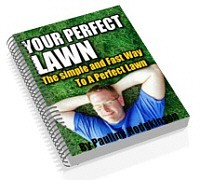 License Type: Master Resell Rights
License Type: Master Resell Rights  File Size: 395 KB
File Size: 395 KB File Type: ZIP
File Type: ZIP
 SKU: 19073
SKU: 19073  Shipping: Online Download
Shipping: Online Download
Ebook Sample Content Preview:
Mowing is good for your lawn because it keeps the grass neat and promotes compact growth. The grass must be long enough to feed the roots but short enough to be manageable. For a general-purpose family lawn, this means cutting the grass so that it's about 2.5cm (1in) long. To achieve a 'bowling-green' finish on a well-laid lawn of fine grasses, you will need to cut the grass back to 1.2cm (½in).
Begin mowing in March and finish in October. The more often you mow your lawn the slower it grows; this is because every time the grass is cut it receives a check in growth. Mowing little and often therefore, not only produces a better finish, but it is more efficient. Ideally, cut your lawn twice a week in summer and once a week in spring and autumn. To maintain an even sward, vary the direction of mowing from time to time. If you cut very infrequently avoid cutting the lawn back too hard because this shocks the grasses and results in a loss of vigour, allowing weeds and moss to invade. Try to only mow the lawn when it is dry. During very dry periods, leave the grass cuttings on the surface, provided that the turf is free from weeds.
A lawn's ideal length will vary with the type of grass, but many turf grass species are healthiest when kept between 1 and1-1/2 inches. You may have to readjust your mower - most are set too low. For a healthy lawn, mow frequently. Short clippings are tender and rot quickly. Set the mower blade high -- thicker lawns shade out weeds. Adjust the pH to 6.5 to 7.5, the range preferred by most grass species.
It is perfectly acceptable to leave the clippings on the lawn to feed the grass provided you mow the grass regularly. Remove the longer, lush growth when you cut the grass for the first time each spring or after taking a holiday. Thereafter, provided the clippings are under 2cm (1/2in) long and they scatter evenly, they can be left. Any clippings removed from the lawn can be placed on a compost heap.
- File Size:395 KB
- License: Master Resell Rights
- Category:Ebooks
- Tags:2008 Ebooks Master Resale Rights








